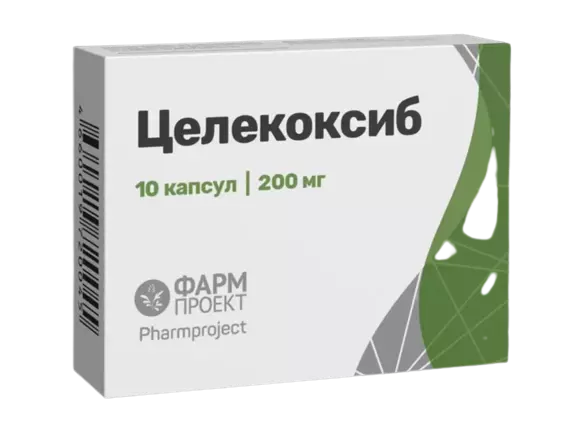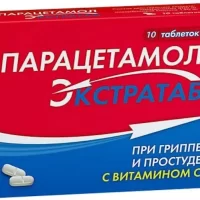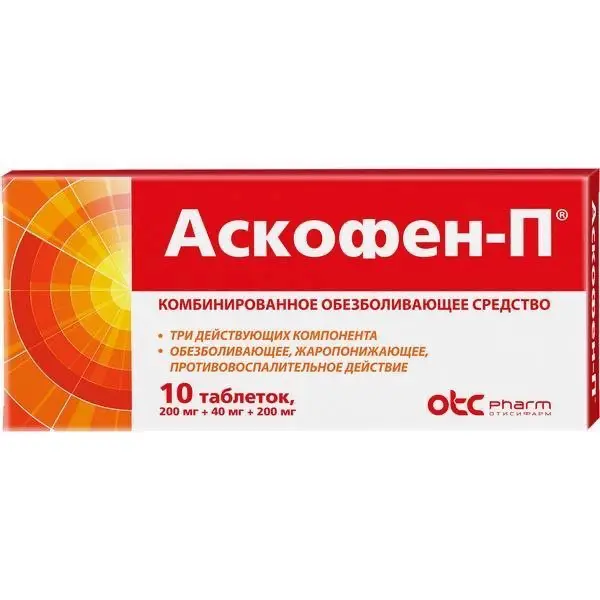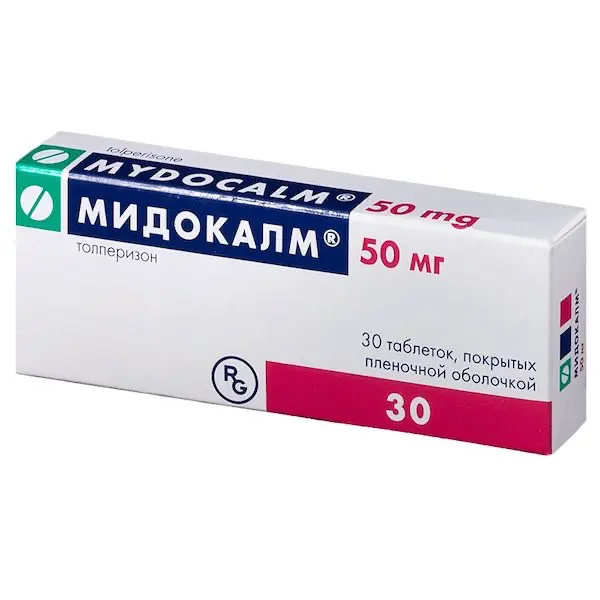Description
Celecoxib 200 mg Pharmacodynamics
Celecoxib 200 mg has anti-inflammatory, analgesic and antipyretic effects, blocking the formation of inflammatory prostaglandins (Pg) mainly by inhibiting cyclooxygenase-2 (COX-2). COX-2 induction occurs in response to inflammation and leads to the synthesis and accumulation of Pg, especially PgE2, with increased manifestations of inflammation (edema and pain). In human therapeutic doses celecoxib does not significantly inhibit cyclooxygenase-1 (COX-1) and has no effect on Pg, synthesized as a result of COX-1 activation, and does not affect normal physiological processes, associated with COX-1 and running in tissues, especially in stomach, intestine and thrombocytes.
Effect on renal function
Celecoxib reduces urinary excretion of PgE2 and 6-keto-PgF1 (a metabolite of prostacyclin), but has no effect on the serum concentration of thromboxane B2 and urinary excretion of 11-dehydrotromboxane B2, a metabolite of thromboxane (both COX-1 products).
Celecoxib does not cause decreased glomerular filtration rate (GFR) in elderly patients and patients with chronic renal failure, transiently reduces sodium excretion. In patients with arthritis, the observed incidence of peripheral edema, arterial hypertension and heart failure is comparable to that of non-selective COX inhibitors with inhibitory activity against COX-1 and COX-2. This effect was most pronounced in patients treated with diuretics. However, there was no increase in the incidence of high blood pressure and heart failure, and peripheral edema was mild and resolved on its own.
Indications
Symptomatic therapy of osteoarthritis, rheumatoid arthritis and ankylosing spondylitis;
─ pain syndrome (back pain, musculoskeletal, postoperative and other types of pain);
─ treatment of primary dysmenorrhea.
Contraindications
Hypersensitivity to Celecoxib 200 mg or any of its components;
known hypersensitivity to sulfonamides;
Complete or incomplete combination of bronchial asthma, recurrent nasal and paranasal sinus polyposis, and intolerance to acetylsalicylic acid or other NSAIDs, including other COX-2 inhibitors (including a history);
─ period after coronary artery bypass surgery;
Active erosive and ulcerative lesions of the mucous membrane of the stomach or duodenum, or gastric and duodenal ulcer in the acute stage, or gastrointestinal bleeding;
Inflammatory bowel disease (Crohn’s disease, ulcerative colitis) in the acute phase;
Chronic heart failure (II-IV functional class according to NYHA classification);
─ confirmed coronary heart disease, peripheral arterial disease and/or cerebrovascular disease in an advanced stage;
─ hemorrhagic stroke;
─ Subarachnoid hemorrhage;
Severe hepatic impairment (no experience of use);
Severe renal insufficiency (CKR less than 30 ml/min), advanced renal disease, confirmed hyperkalemia (no experience of use);
Lactase deficiency, lactose intolerance, glucose-galactose malabsorption;
─ Pregnancy and breastfeeding;
─ under 18 years of age (efficacy and safety of the drug has not been established).
Dosage and administration
- Orally, without chewing, with water, regardless of meals.
- As the risk of possible cardiovascular complications may increase with increasing dosage and duration of celecoxib administration, the drug should be taken in the lowest effective dose for the shortest possible course. The maximum recommended daily dose for long-term use is 400 mg.
- Symptomatic treatment of osteoarthritis: the recommended dose is Celecoxib 200 mg per day in 1 or 2 doses.
- Symptomatic treatment of rheumatoid arthritis: the recommended dose is 100 mg or 200 mg 2 times a day.
- Symptomatic treatment of ankylosing spondylitis: the recommended dose is 200 mg per day in 1 or 2 doses. In some patients, the efficacy of 400 mg per day has been noted.
- Treatment of pain syndrome: The recommended initial dose is 400 mg, followed, if necessary, by an additional dose of 200 mg on the first day. On the following days the recommended dose is 200 mg 2 times a day, if necessary.
- Treatment of primary dysmenorrhea: The recommended starting dose is 400 mg, followed by an additional dose of 200 mg on the first day, if necessary. On the following days the recommended dose is 200 mg 2 times a day, if necessary.
- Use in special groups
- Elderly patients: No dose adjustment is usually required. However, in patients with body weight less than 50 kg, it is better to start treatment with the minimum recommended dose.
- Patients with hepatic impairment: In patients with mild hepatic impairment (class A according to Child-Pugh classification) no dose adjustment is required. In patients with mild hepatic impairment (Child-Pugh class B), the initial recommended dose of the pre-drug should be reduced by half. There is no experience of using the drug in patients with severe hepatic impairment (Child-Pugh class C).
- Patients with impaired renal function: No dose adjustment is required in patients with mild to moderate renal insufficiency. There is no experience of using the drug in patients with severe renal insufficiency.
- Concomitant use with fluconazole: during concomitant use of fluconazole (CYP2C9 isoenzyme inhibitor) and celecoxib the initial recommended dose of the drug should be reduced by half. Caution should be exercised when concomitant use with other CYP2C9 isoenzyme inhibitors.
- Slow metabolism of CYP2C9 isoenzyme substrates: Caution should be exercised in patients who are slow metabolizers or are suspected of having this condition, as this may lead to accumulation of high plasma concentrations of Celecoxib 200 mg. In such patients, the initial recommended dose of the drug should be halved.





